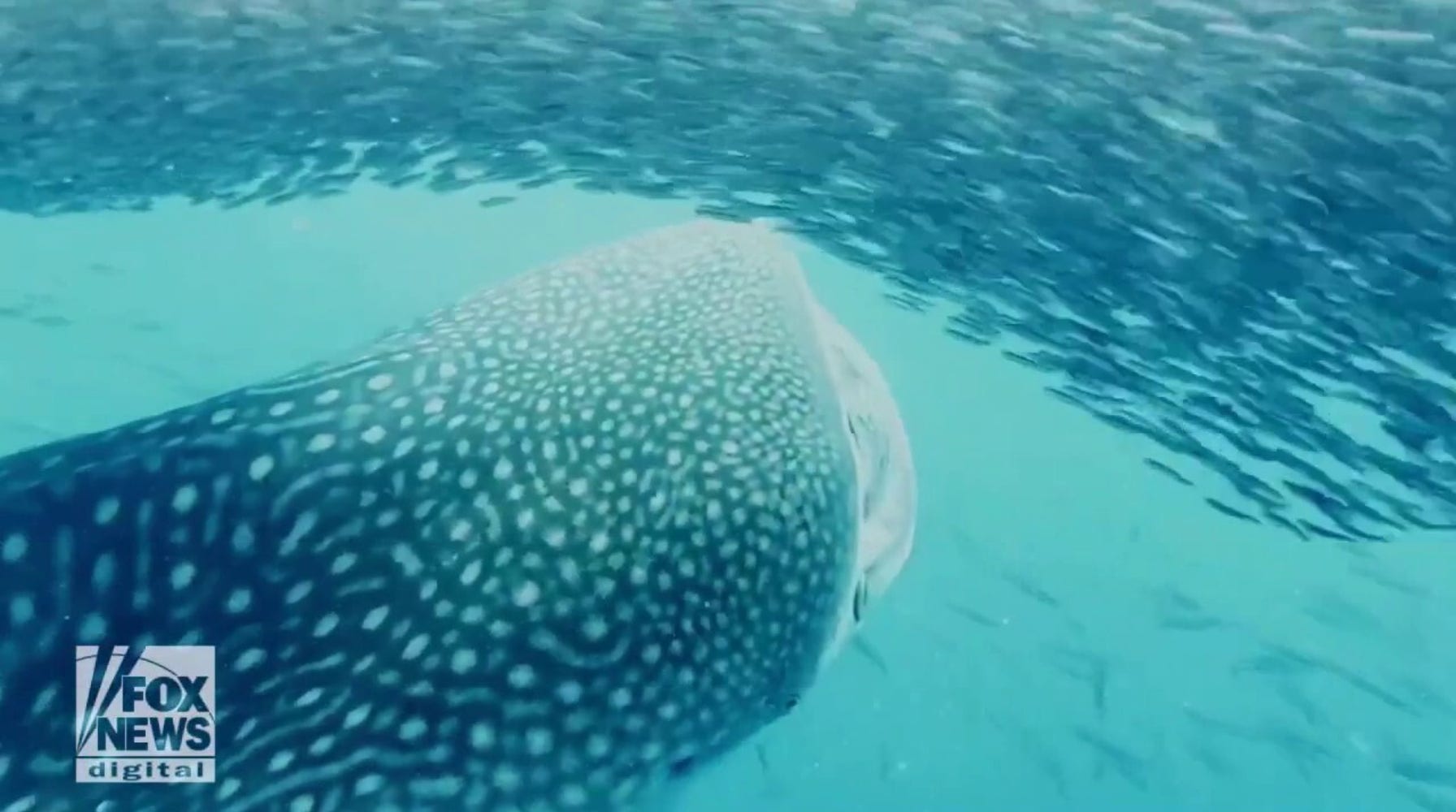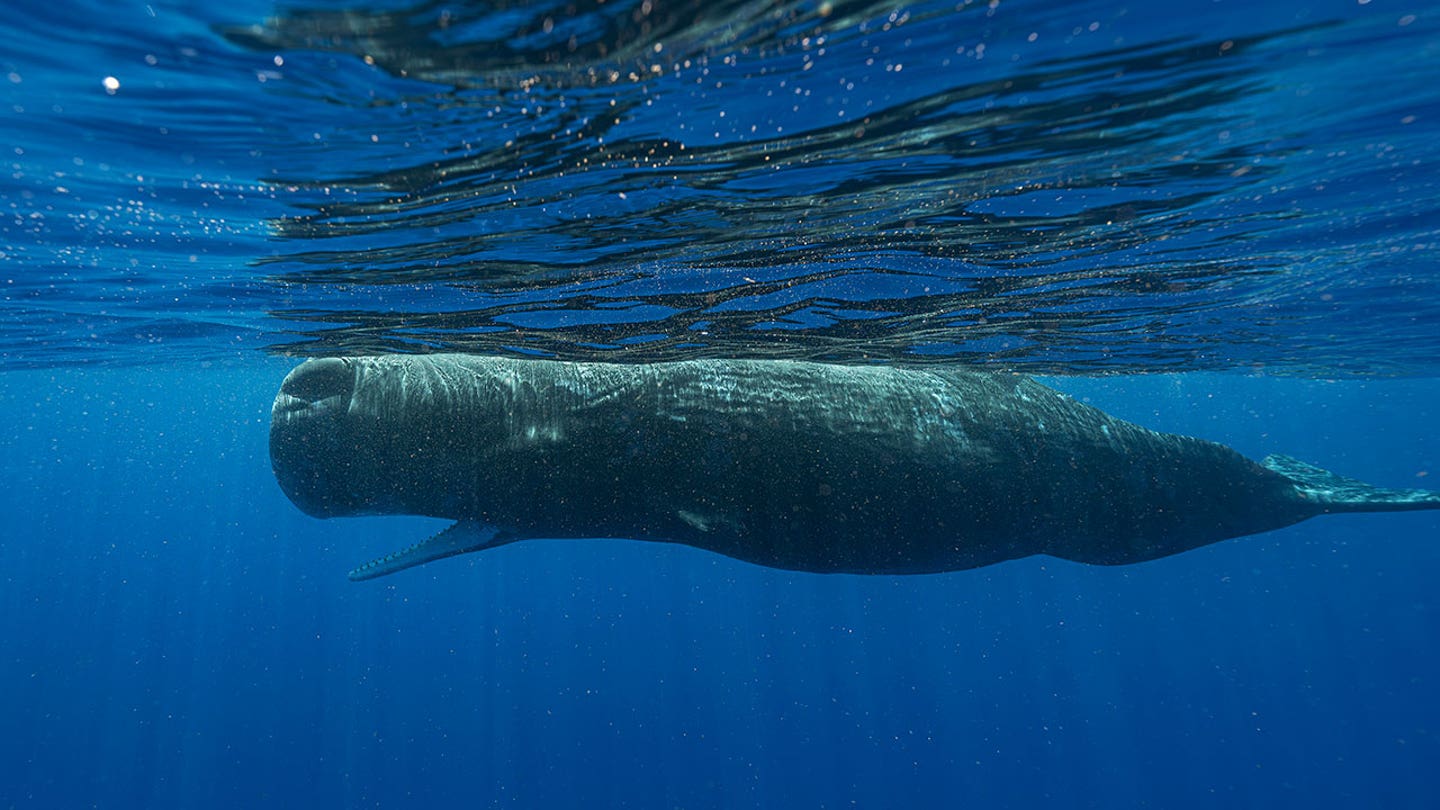Deciphering the Code: Unraveling the Communication System of Sperm Whales
- May 8, 2024 12:00pm
- 293
Scientists have made significant strides in understanding the foundational aspects of sperm whale communication, revealing the potential for a "phonetic alphabet" in their complex clicks. This groundbreaking research could pave the way for better protection and conservation efforts for these majestic marine giants.

Deep beneath the azure waters of the Caribbean Sea, a team of dedicated scientists has embarked on an extraordinary quest: deciphering the communication system of enigmatic sperm whales. Long shrouded in mystery, the intricate clicks produced by these colossal creatures have now started to yield their secrets.
In a groundbreaking study published in the journal Nature Communications, researchers have uncovered the basic building blocks of the sperm whale's potential "phonetic alphabet." By meticulously analyzing over 8,700 "codas" – short snippets of sperm whale clicks – the team identified four fundamental components believed to constitute the foundation of their communication.

Pratyusha Sharma, the lead researcher of the study and an AI expert at the Massachusetts Institute of Technology, explains that this alphabet enables the whales to form countless combinations, similar to the formation of words and phrases in human language. This vast communication system provides sperm whales with remarkable flexibility and complexity in their interactions.
The research team's efforts were aided by the establishment of an innovative underwater recording studio in Dominica, home to a resident population of approximately 200 sperm whales. With microphones strategically placed at various depths, scientists were able to capture a wealth of data on the whales' clicks. Tags attached to the whales also provided valuable insights into their behavior and proximity to other individuals.
Jeremy Goldbogen, an associate professor of oceans at Stanford University, hailed the new research as "extraordinary," emphasizing its potential to reshape our understanding of these enigmatic ocean giants. He believes that the ability to comprehend sperm whale communication could be a game-changer in conservation efforts, helping to minimize risks such as ship strikes and ocean noise pollution.
Despite progress in deciphering marine animal communication, particularly in understanding the whistles of dolphins and the songs of humpback whales, sperm whale communication remained largely unexplored. This study marks a significant step toward filling this knowledge gap.
While the exact meaning of the clicks remains elusive, scientists are optimistic that continued efforts will enable them to match the whales' clicks to specific behaviors. Diana Reiss, a marine mammal expert at the City University of New York, believes this would represent a breakthrough, as it would allow scientists to predict whale behavior based on their clicks.
CETI founder David Gruber acknowledges the immense task ahead, emphasizing the need for millions or even billions of whale codas to fully unravel their communication system. However, he is confident that AI will play a crucial role in accelerating the analysis process.
As scientists continue their quest to translate the clicks of sperm whales, they are hopeful that their findings will not only provide insights into the whales' complex social interactions but also contribute to their conservation and protection. By understanding their communication patterns, we can gain a deeper appreciation for these magnificent creatures and work to safeguard their future in the vast oceans they inhabit.
Related articles
-
 Unearthing the Mysteries of Sanxingdui: A Treasure Trove of Ancient Wonders
The Sanxingdui Ruins in China have yielded an extraordinary collection of artifacts that provide glimpses into an enigmatic ancient civilization....
Unearthing the Mysteries of Sanxingdui: A Treasure Trove of Ancient Wonders
The Sanxingdui Ruins in China have yielded an extraordinary collection of artifacts that provide glimpses into an enigmatic ancient civilization....
- 05 Oct 2024
-
 Biden's Stance on Israel's Response to Iran Draws Criticism from Republicans
President Biden's assertion that Israel's response to Iran's missile attack should be "proportional" has been met with disapproval from some...
Biden's Stance on Israel's Response to Iran Draws Criticism from Republicans
President Biden's assertion that Israel's response to Iran's missile attack should be "proportional" has been met with disapproval from some...
- 05 Oct 2024
-
 Fox News First: 'Trio of Crises' Hinder Harris-Walz Campaign
Fox News Sunday's Shannon Bream examines how concerns over the White House's response to Hurricane Helene, the Israel conflict, and the port strike...
Fox News First: 'Trio of Crises' Hinder Harris-Walz Campaign
Fox News Sunday's Shannon Bream examines how concerns over the White House's response to Hurricane Helene, the Israel conflict, and the port strike...
- 05 Oct 2024
-
 Belfast Woman Faces Assault Charges After Allegedly Attacking Good Samaritans Who Tried to Free Captured Baby Seagull
A Belfast woman is facing assault charges after she allegedly attacked good Samaritans who attempted to free a baby seagull she had captured. Angela...
Belfast Woman Faces Assault Charges After Allegedly Attacking Good Samaritans Who Tried to Free Captured Baby Seagull
A Belfast woman is facing assault charges after she allegedly attacked good Samaritans who attempted to free a baby seagull she had captured. Angela...
- 05 Oct 2024
-
 Wayfair's Fall Way Day Sale: Get Your Home Ready for the Holidays with Unbelievable Deals
Get ready for Wayfair's Fall Way Day sale from October 5th to 7th, featuring over one million items on discount and site-wide free shipping. Take...
Wayfair's Fall Way Day Sale: Get Your Home Ready for the Holidays with Unbelievable Deals
Get ready for Wayfair's Fall Way Day sale from October 5th to 7th, featuring over one million items on discount and site-wide free shipping. Take...
- 05 Oct 2024
-
 Israel's Effort to Dismantle Hezbollah: Analysis by Gen. Jack Keane
Gen. Jack Keane, Fox News senior strategic analyst, analyzes Israel's ongoing operation against Hezbollah in Lebanon, highlighting the threat posed...
Israel's Effort to Dismantle Hezbollah: Analysis by Gen. Jack Keane
Gen. Jack Keane, Fox News senior strategic analyst, analyzes Israel's ongoing operation against Hezbollah in Lebanon, highlighting the threat posed...
- 05 Oct 2024

Leave a comment
Your comment is awaiting moderation. We save your draft here
0 Comments
Chưa có bình luận nào